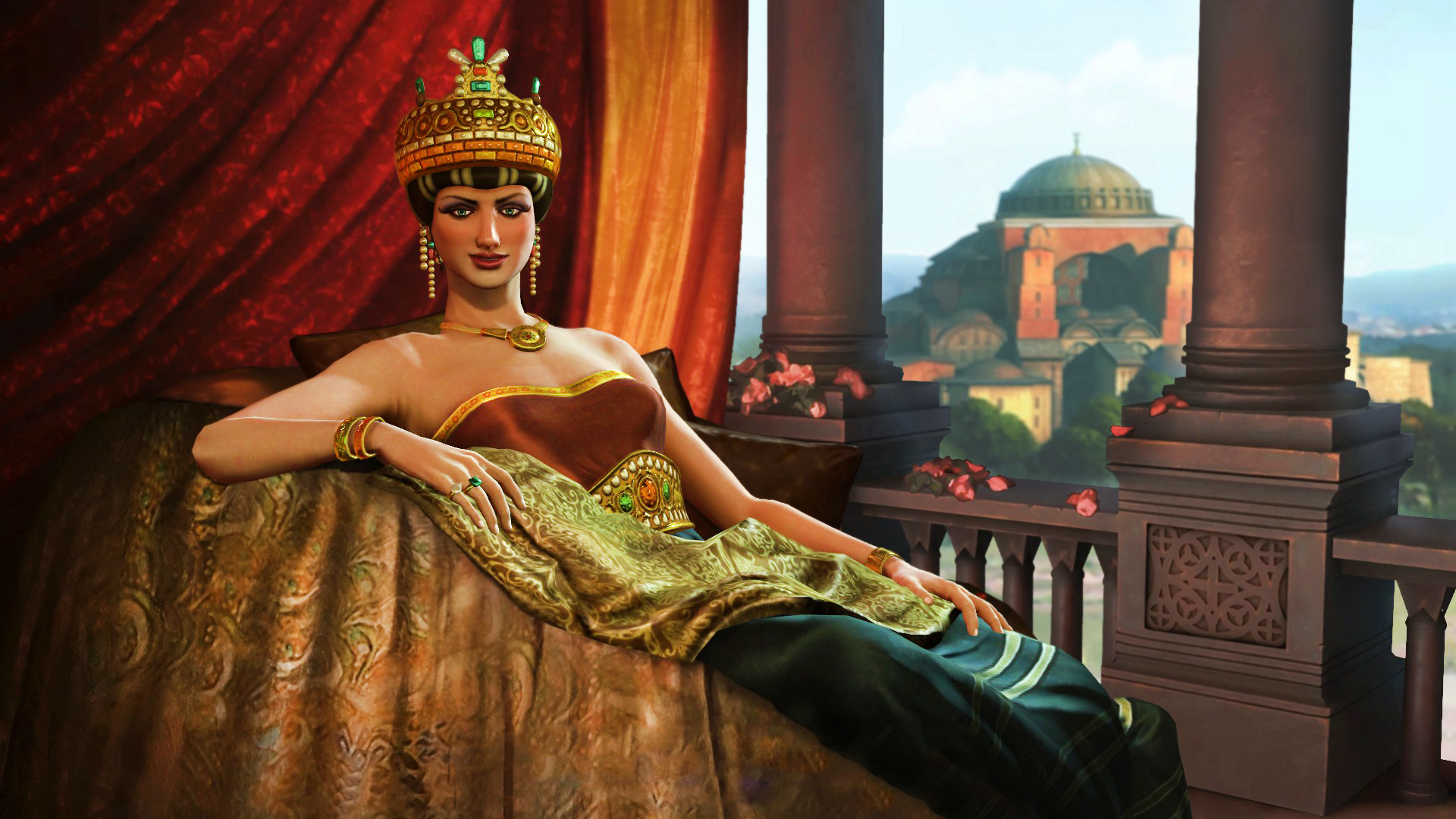43 Real-Life Female Leaders We’d Love to See Included in Civilization VI
Deal with it. Historically.

If you’re a fan of history-inspired video games, you got some exciting news last month with the announcement of Civilization VI. The series, the first edition of which came out way back in 1991, is a perpetual remake of the same absurdly addictive turn-based strategy game, in which you chart the course of a civilization from the stone age to the space age. You compete against human or computer players with units, buildings, technologies and policies drawn from history (though certainly not necessarily matching up with how history really unfolded).
Each civilization has a historical leader which, truth be told, doesn’t make a whole lot of difference to the gameplay. Like much in the game, they are mostly there to add to the general historical milieu. But since we all know how important representation is, I’ve thought a lot about the choices the gamemakers have made for these leaders. Civ V, the largest Civ game to date, featured 43 total civilizations including all expansions, and a single leader choice for each. Nine, or just over ⅕, of the leaders were female. Not as bad as it could have been perhaps, but far from equal, and still lopsided enough to convey the message that men overall had a much bigger role to play in the story of human civilization.
As everyone reading this knows, that’s not true; it’s a perception enabled by a combination of patriarchal systems that consistently put men in power, and sexism within the recording and study of history itself. While it sometimes takes a bit more effort to uncover their stories, women have contributed to every civilization in the world, and history-inspired pop culture like the Civ series can have a huge role in making that clearer.
That’s why I’d like to propose that Civ VI have options for leaders of both genders for every single playable civilization. There is actually precedent for this; 1996’s Civ II had this feature, although they at times resorted to including female leaders that were clearly mythological or fictional, a choice that I had no problem with but, in my research for this piece, found to be unnecessary. Here’s a list of historical female leaders from each of the 43 civilizations featured in Civ V that I would love to see in Civ VI. (Ones that actually did appear in Civ V are marked with an asterisk.)
American: Eleanor Roosevelt. Called the “First Lady of the World” for her instrumental role in the formation of the UN, in another American era she would have been a great president herself. Some wanted her to run in 1948, but she declined and gave the electorate’s sexism as one reason why.
Arabian: Sitt al-Mulk. Sitt’s brother, Fatimid Caliph al-Hakim, who was known for abusing his harem, suddenly died in 1021, leaving Sitt to inherit the throne. She may or may not have been responsible for his death, but either way she was the only known female ruler of any of the early Islamic caliphates.
Assyrian: Shammuramat. Named after the legendary Assyrian queen Semiramis (or, possibly, the inspiration for her), Shammuramat led the Assyrian Empire in the 7th or 6th centuries BCE. She was one of the first known female rulers in history.
Austrian: Maria Theresa*. Ruling over the Habsburg Dominions of the Holy Roman Empire for 40 years, Maria Theresa introduced major educational and financial reforms, led Austria in two major wars, and harshly persecuted Jews and Protestants. She also managed to find time to have 16 children, including Marie Antoinette.
Aztec: Isabel de Moctezuma. As her father’s only surviving heir who fought for indigenous power long after the conquistadores took over, the “last Mexica princess” is a bit of a Cleopatra figure. After serving as Hernan Cortes’ mistress and becoming a widow five times over, Isabel (who was born Tecuichpoch Ixcaxochitzin before her forced conversion to Catholicism) married a sympathetic Spaniard, Juan Cano. The two repeatedly sued to reclaim her family’s land, with the intent of leaving it to her daughters, as was the Aztec custom (in contrast to the male-based inheritance of Spanish law).
Babylonian: Addagoppe. A priestess who greatly expanded worship of the lunar deity Sin, Addagoppe may have ruled Babylon in place of her son Nabonidus when he moved to another city. While it’s unclear if that’s true (she would have been 96 at the time), she was clearly powerful, as she was buried with the honors of a queen.
Brazilian: Anita Garibaldi. During the early days of the Brazilian Empire, Garibaldi was a perpetual revolutionary, fighting for republican secessionists across South America. She died in Ravenna before seeing her husband and political partner Giuseppe achieve their later goal of unifying Italy.
Byzantine: Theodora*. Theodora had an unbelievable life (and afterlife) arc: from actress and prostitute, to empress, to saint of the Eastern Orthodox Church. She drew on her experience to protect the most vulnerable women of Constantinople, passing anti-rape legislation and creating a sanctuary house for sex workers to live in, knowing a safe life for them was otherwise impossible at the time.
Carthaginian: Dido*. The story goes that, after her brother killed her husband in Tyre, she escaped to North Africa to found her own empire and plot her revenge. While it’s not 100 percent clear if this vaguely Daenerys-like queen was real, her legacy was venerated by Carthaginians throughout the pivotal Punic Wars with Greece and Rome.
Celtic: Boudicca*. When Boudicca’s husband died and left partial sovereignty over the Iceni tribe to their daughters, the patriarchal Romans didn’t accept it. Boudicca’s response? She burned London to the ground and, to hear Roman historians tell it, her revolution came within a hair’s breadth of convincing Nero to abandon Britain altogether.
Chinese: Wu Zetian*. As de facto empress for about 35 years (while her ineffective nephew ruled) and an official one for 15, Wu was China’s only female monarch in more than 4,000 years. She led several wars in Korea, increased meritocratic policies for choosing civil officials, and declared her reign to be a one-woman dynasty.
Danish: Margrethe I. Not to be confused with the current Queen Margrethe of Denmark, this Margrethe lived after the Viking Age brought about by the Danes (as seen in Civ V), but was a pivotal figure nonetheless. Her strategic marriages created the Kalmar Union, which united Scandinavia for more than a century in the Middle Ages.
Dutch: Wilhelmina. The longest reigning Dutch monarch was a World War II heroine who led her kingdom’s government-in-exile during the war. She dismissed a prime minister who advocated negotiating a peace with Hitler and inspired the Dutch Resistance with late-night radio broadcasts throughout the war.
English: Elizabeth I.* Good Queen Bess presided over a golden age of culture, religious reform and discovery (from the European perspective, that is). And you can also toss in one of the most famous military victories in English history – the defeat of the fearsome Spanish Armada in 1588 – for good measure.
Egyptian: Hatshepsut. Hatshepsut was one of the most successful pharaohs, ruling near the peak of ancient Egyptian power and leaving an architectural legacy rivaled by few others. Many of her successors engaged in attempts to literally erase her name from historical texts for reasons that are unknown, though her gender having something to do with it seems a depressingly good bet.
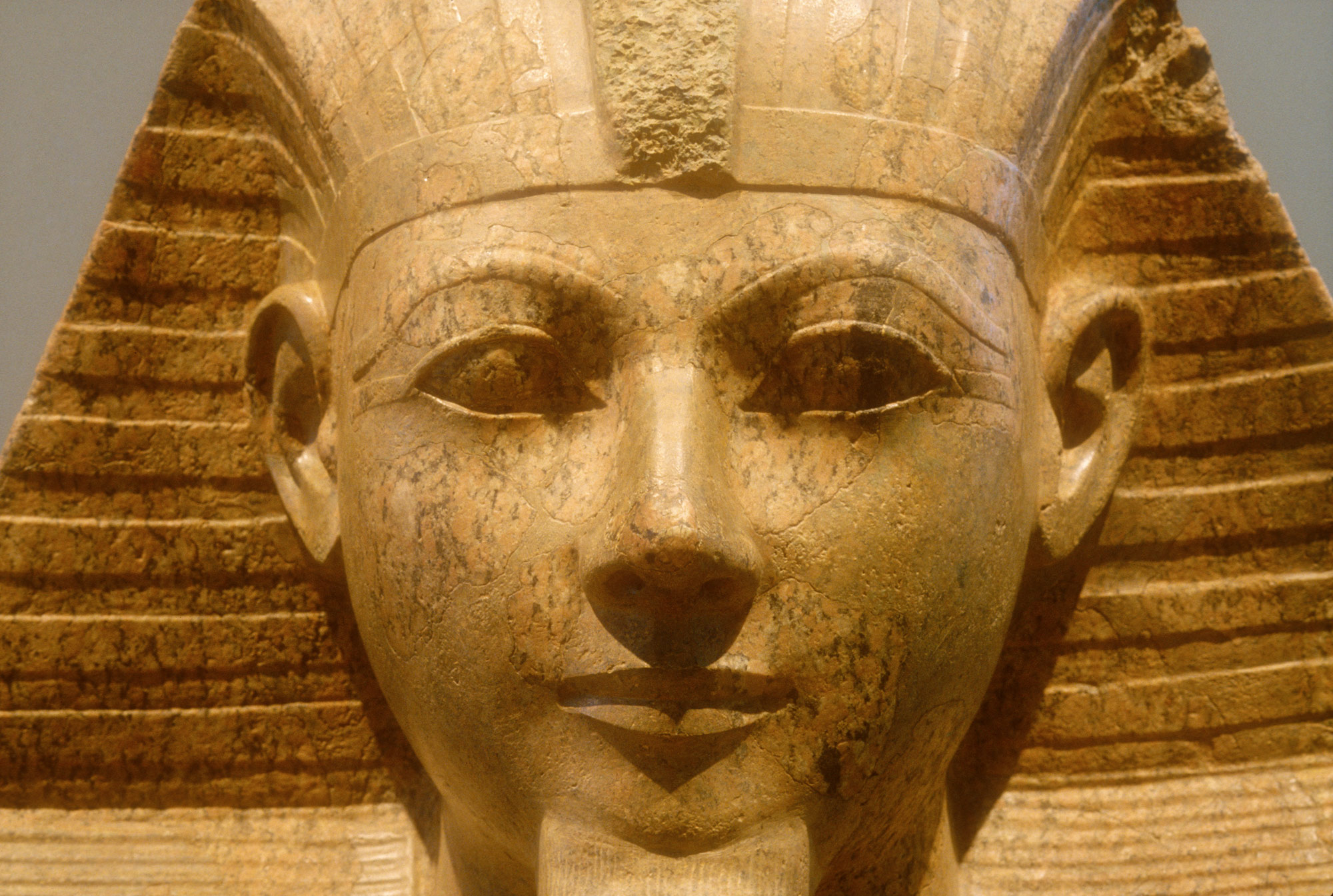
(image via the Metropolitan Museum of Art)
Ethiopian: Makeda. While the historical evidence for Makeda (otherwise known as the biblical Queen of Sheba) being Ethiopian is unclear, there’s no question that she occupies a crucial position in the nation’s founding myth. She’s credited with creating the dynasty from which even modern Ethiopian rulers like Haile Selassie claimed descent.
French: Joan of Arc. How an illiterate teenager claiming she was on a divine mission convinced her king to put her in charge of the French army during the Siege of Orleans will always be a mystery. But after the battle was won and became the turning point of the Hundred Years War, Joan’s status as one of the most incredible women in history was secured.
German: Louise of Mecklenburg-Strelitz. Considered her husband King Frederick William III’s “best minister” by Napoleon, Louise was deeply involved in the politics of her time. Her doomed though impassioned plea to Napoleon for mercy on the Prussian kingdom entrenched her image as an ideal German for centuries.
Greek: Aspasia. As Pericles’ partner, Aspasia was probably the most influential woman during the Athenian Golden Age. She was renowned for her wisdom and rhetorical skill, associated with all the greatest thinkers of the day, and is referenced in the works of philosophers like Plato and Xenophon.
Hunnic: Kreka. The Huns are probably the Civilization civ about whom the least is known; they left no written records, their language is a mystery, and they generally did not actually build cities or even buildings. Proper names recorded in Roman accounts are among the few bits of information we have, so we’ll go with Attila’s wife.
Incan: Mama Ocllo. The Incan monarchy comprised both the Sapa Inca (king), who held legal authority over men and honored the sun god, and the Coya (queen), who held legal authority over women and honored the moon goddess. Mama Ocllo was one of the first Coyas and legendarily established the Incan Empire with then-Sapa Inca Pacachuti, who was either her husband, brother or son (or some combination of the three).
Indian: Indira Gandhi. A a prime minister who moved India forward militarily and economically and accumulated near-unlimited power during the infamous “Emergency” period, Gandhi (who was not related to Mohandas Gandhi) is a complex figure. Some remember her as a brutal dictator, while others celebrate her as the Indian leader who was most effective at connecting emotionally to the poor.
Indonesian: Kartini. While living in seclusion until marriage as was the Javanese custom for women of her time, Kartini spent her time reading feminist magazines and writing letters imagining an Indonesia with both greater women’s rights and independence from the Netherlands. She went on to found several schools for girls and is celebrated today with an annual national holiday.
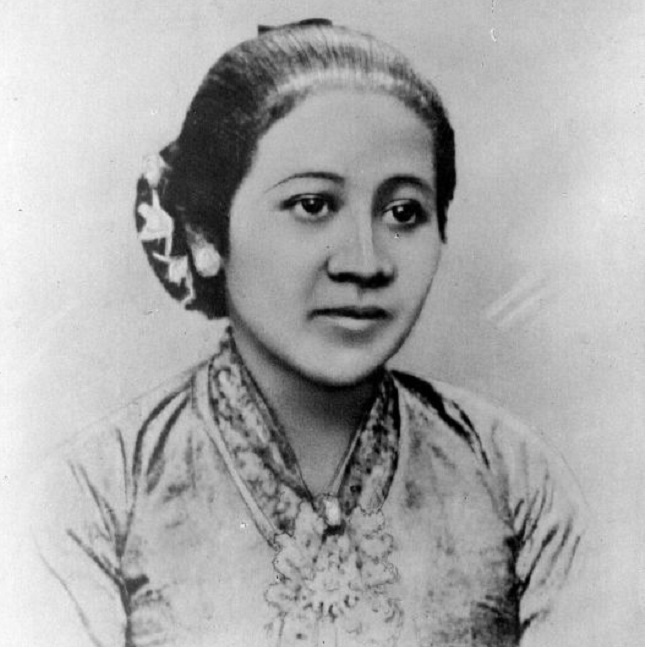
(image via Wikimedia Commons)
Iroquois: Molly Brant. Iroquois society traditionally afforded great respect and power to clan mothers, and while it’s unclear if Brant (formerly known by her Mohawk names Konwatsi’tsiaienni and Degonwadonti) ever held that title, she was nevertheless one of the most influential Native Americans during the American Revolution. While she’s been criticized for allying with the British, she was dedicated to preserving her culture and felt strongly that an independent America posed a greater threat to her people.
Japanese: Suiko. Since the Meiji Restoration, Japan’s emperorship has been restricted to males without exception—meaning they’ve stepped backward compared to the 1st millennium, when eight empresses reigned. The longest ruling was Suiko, who formally recognized Buddhism as the state religion and instituted some meritocratic, rather than purely hereditary, concepts of titles and ranks.
Korean: Seondeok. During Korea’s Three Kingdoms era, Seondeok’s diplomatic skill produced foreign alliances that put Silla in position to ultimately conquer the other two kingdoms shortly after her death. Seondeok was also known for numerically interesting building projects: she completed a Buddhist pagoda with nine levels representing each of Silla’s traditional enemies, and an observatory (recognized as the first of its kind in the region) made with 27 rows of stones, in honor of her position as Silla’s 27th ruler.
Mayan: Wak Chanil Ajaw. Wak Chanil Ajaw, or “Lady Six Sky,” ruled the polity of Naranjo for decades. Like many Mayan leaders, she’s known mostly from images on monumental stelae; she commissioned several showing her costumed as the Mayan moon goddess and as a warrior-queen, trampling a captured enemy.
Moroccan: Sayyida al-Hurra. Born to an aristocratic Muslim family expelled from Europe by Spain’s Catholic monarchs, Sayyida’s revenge was to become the pirate queen of the Mediterranean. She ruled Tetouan in northern Morocco, and so impressed the Sultan of Morocco that he married her. Shockingly, he traveled to her to show that Sayyida would retain her title, as she did until her stepson overthrew her in 1542.
Mongolian: Mandukhai Khatun. Although her means of acquiring and maintaining power may have been a bit untoward (she adopted Genghis Khan’s only living descendent as a boy and, when he grew up, proceeded to marry him), Mandukhai did plenty to earn her title of “the Wise.” She led the Chingisids in battle while pregnant with twins, reunited the Mongols, and established the dynasty from which most later Mongol nobility descended.
Ottoman: Roxelana. Roxelana was one concubine in a harem of hundreds to Sultan Suleiman the Magnificent before she impressed him so much as to become his wife, violating a 200 year-old tradition barring an Ottoman sultan from marrying a consort. She used her newfound power to position her son as his heir, build soup kitchens all across the empire’s vast territory, and help solidify the Ottoman-Polish alliance thanks to her eastern European heritage.
Persian: Artemisia I. As the queen of the city of Halicarnassus, then a component of the Persian Empire, no one would have expected Artemisia to accompany, let alone lead, her military into battle. But she was too brilliant of a tactician not to; her heroic actions at the Battles of Artemisium and Salamis earned her the highest praise from both Xerxes and the historian Herodotus.
Polish: Jadwiga. Jadwiga’s marriage to Grand Duke Jogaila of Lithuania was a huge sacrifice on her part; she was already engaged to someone she loved, and only agreed to marry the much older Jogaila when she sensed a divine message that it would be for Poland’s benefit. That ended up being true, as the Polish-Lithuanian union endured for centuries, and Jadwiga’s establishment of schools, hospitals and universities made her one of the most beloved Polish rulers.
Polynesian: Liliuokalani. The last ruler of the Kingdom of Hawaii, Liliuokalani was overthrown by American industrialists when she attempted to restore the monarchy’s power that had been forcibly stripped during her predecessor’s reign. A believer in peaceful resistance and a gifted songwriter, she spent the rest of her life writing songs and books celebrating her country and lamenting its loss of independence.
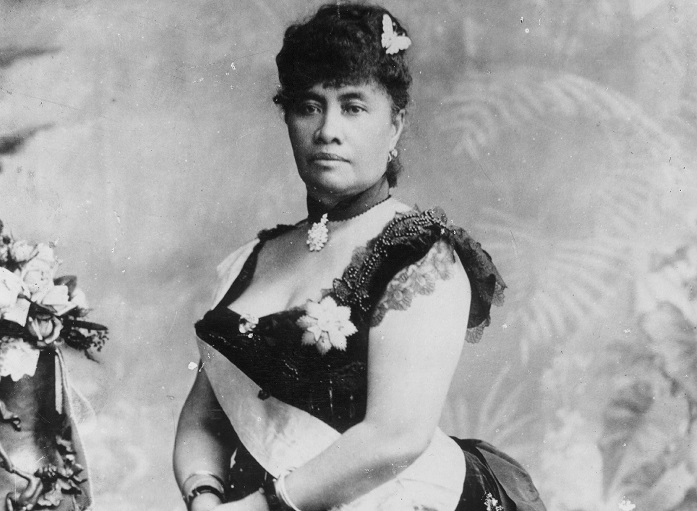
(image public domain, via Wikimedia Commons)
Portuguese: Maria I*. Known alternately as “the Pious” and “the Mad,” Maria certainly seemed to be both, as Jesus was a key subject of most of her delirious raving episodes. Despite this, she’s revered in both Portugal (for being steadfastly opposed to the Napoleonic threat, and building some of the country’s most spectacular architecture) and Brazil (where she transferred her government after a Napoleon-sponsored Spanish invasion).
Roman: Livia Drusilla. Livia was the first woman to be deified as part of Rome’s imperial cult, and was seen by the public as the model Roman wife during her marriage to Augustus. But behind the scenes she was a cunning and ruthless politician, ensuring the ascension of her son Tiberius by any means necessary, including (most likely) masterminding several assassinations.
Russian: Catherine II*. Few leaders in history have embodied the term “enlightened despot” more accurately than Catherine, who seized power after organizing a coup against her husband and proceeded to preside over a Russian golden age. She greatly expanded her borders through wars and kept an iron grip on the serfdom system, but was also a major patron of artists and scientists, a pioneer in the establishment of female education, and on top of all that, the owner of an incredible collection of erotic furniture.
Shoshone: Sacagawea. Sacagawea’s presence on the Corps of Discovery Expedition was crucial, from interpreting, to guiding, to at one point quickly leaping out of a boat to save all of Lewis and Clark’s journals, on the river now named for her. Depending on which story you believe, she died at either age 24 or 94—but either way, she became a symbol of the worth of women and a hero for the American women’s suffrage movement.
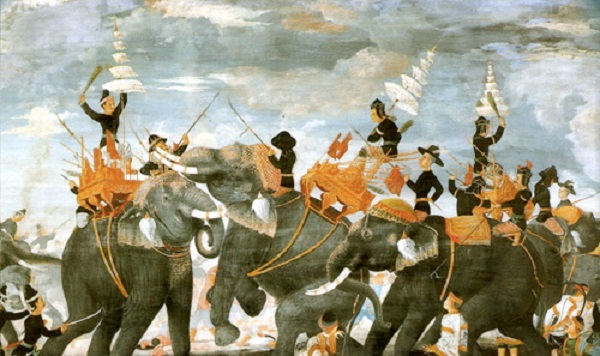
(image public domain, via Wikimedia Commons)
Siamese: Suriyothai. Suriyothai was a queen consort during the Ayutthaya period who would fight alongside her husband, King Maha Chakkraphat, in battle riding a war elephant—as did their daughter, Boromdhilok. She achieved enduring fame as a martyr when she saved the king’s life by sacrificing her own (and Boromdhilok’s), charging in front of his elephant just as a Burmese commander was about to strike.
Songhai: Amina. The Songhai do not have a lot of recorded history upon which to draw, as their glorious reign in West Africa lasted only a bit more than 100 years. Amina, while not Songhai herself, was an Muslim queen who ruled Zazzau, one of the Hausa city-states that arose after the Songhai Empire’s collapse. She personally led an army of thousands and established her territory as a hub for trade.
Spanish: Isabella I*. The extremely pious Isabella’s co-reign in Castille with her husband Ferdinand V had enormous implications for the world on both sides of the Atlantic. In the very same year they completed the Reconquista, eliminating the last Islamic kingdom in western Europe, and sponsored Christopher Columbus’ first voyage to the Americas.
Swedish: Christina. One of the most educated women of her time, Christina knew eight languages, collected books and artwork voraciously, and read so constantly that she barely had time to sleep, let alone do anything about her wild hair, which became her trademark. She was unabashedly genderqueer, alternately going through phases of wearing men’s clothes and women’s clothes considered far too revealing for someone of her stature, and publicly flaunted her relationship with her companion and “bed-fellow,” Ebba Sparre.
Venetian: Felicia Cornaro. As Dogaressa of Venice in the 11th century, Felicia convinced her husband, Doge Vital I Michiel, to concern himself with foreign affairs as the insular, finance-focused Venetians rarely did. It was her sympathy to the plight of Christian refugees from Palestine within their city that ultimately led to Venice raising an army to participate in the First Crusade.
Zulu: Nandi. After having a son out of wedlock, Nandi was exiled from her home and left to raise her son on her own; that son, Shaka, went on to found the Zulu Kingdom. Nandi held the title “queen of queens” and was a key advisor during Shaka’s reign. Upon her death, he was so distraught that he ordered a number of his attendants to be killed as part of a mourning ritual.
Dan Wohl lives with Star Trek books, Star Trek T-shirts, Star Trek figurines, Star Trek pins, Star Trek video games, Star Trek Pez dispensers, Star Trek christmas ornaments and his wife in Burlingame, California. You can follow him on Twitter at @Dan_Wohl.
Want more stories like this? Become a subscriber and support the site!
—The Mary Sue has a strict comment policy that forbids, but is not limited to, personal insults toward anyone, hate speech, and trolling.—
Follow The Mary Sue on Twitter, Facebook, Tumblr, Pinterest, & Google+.
Have a tip we should know? [email protected]
